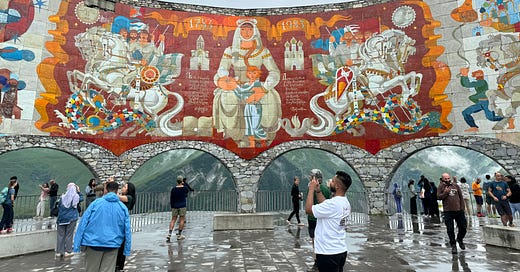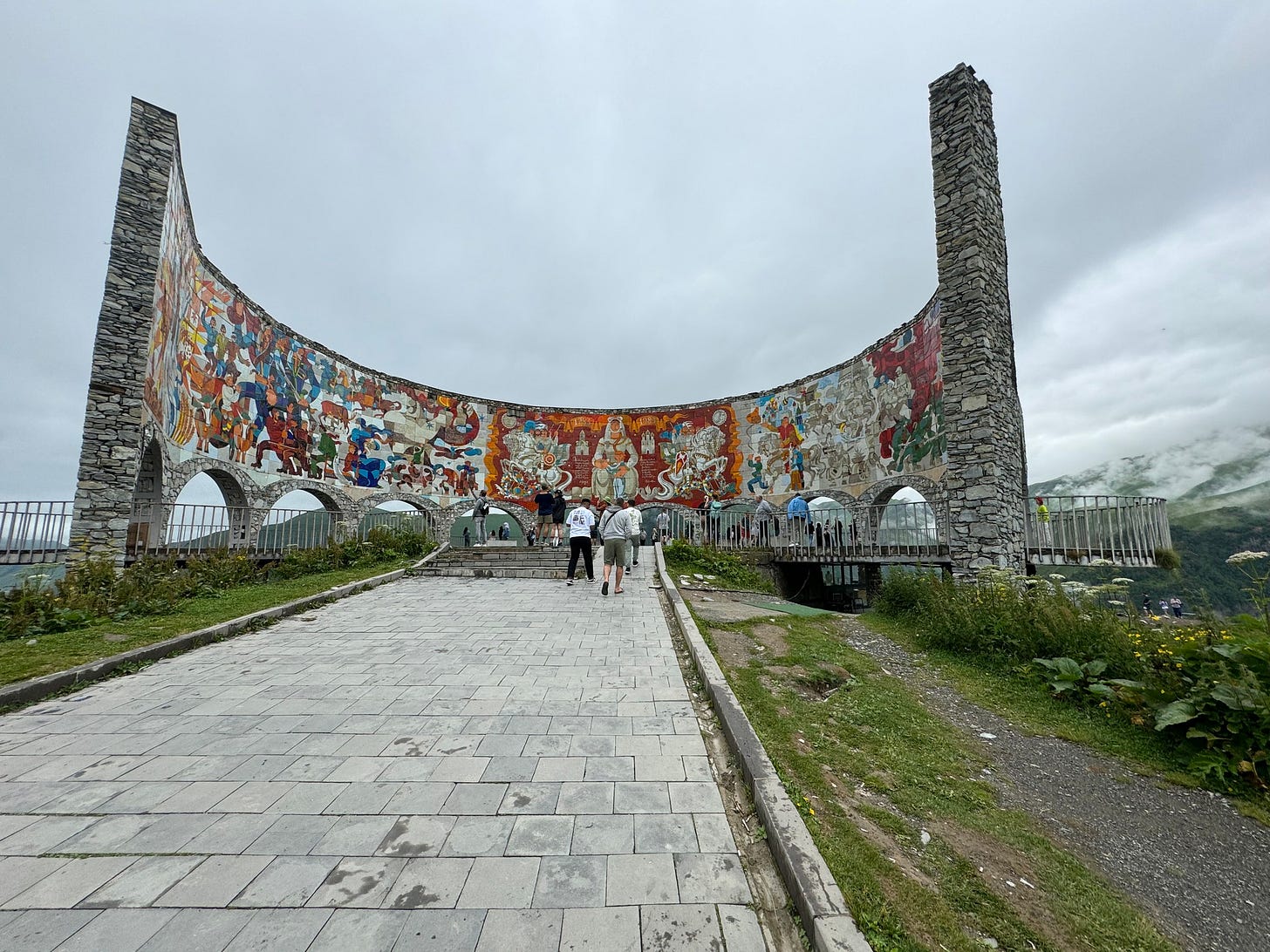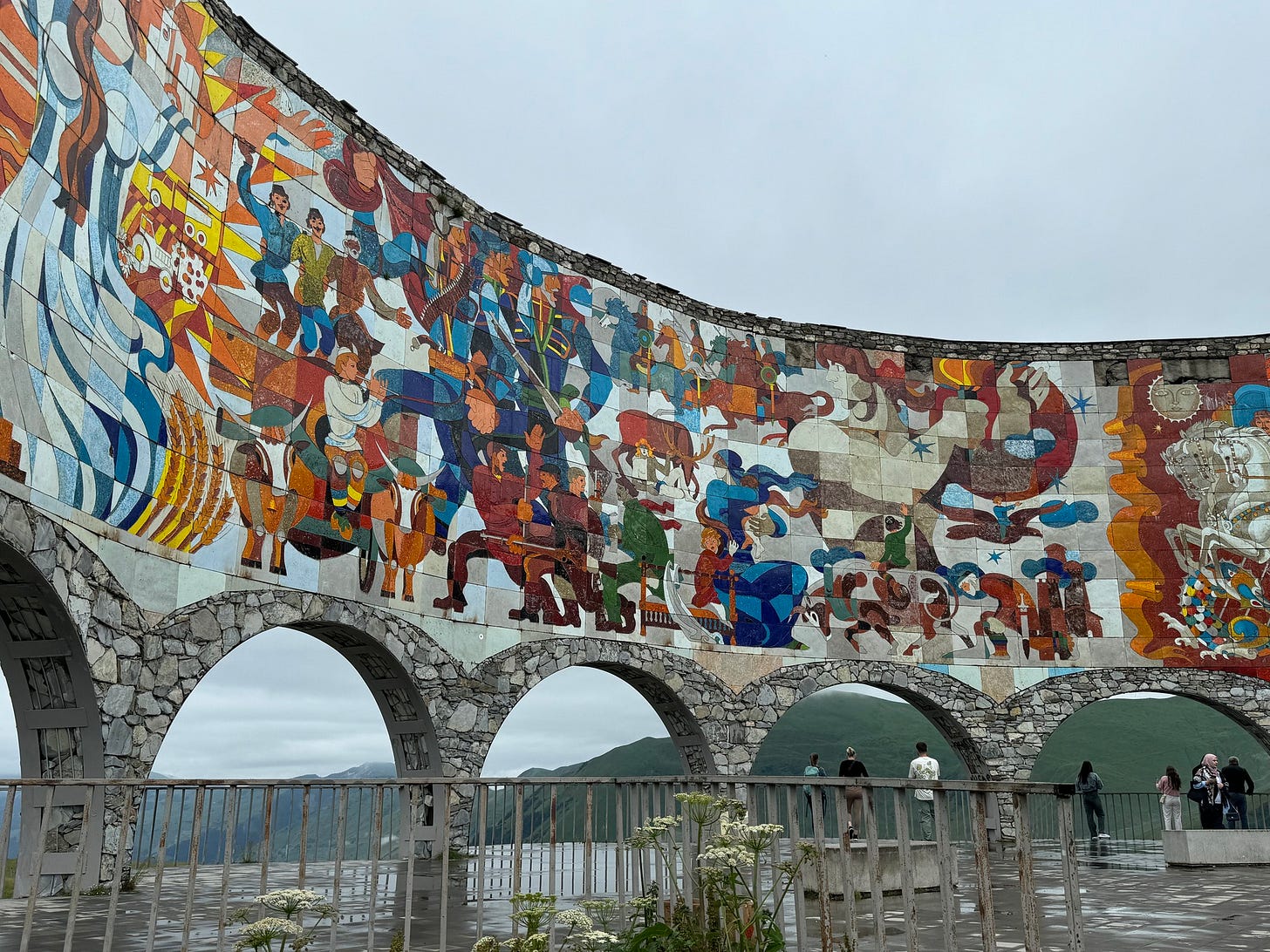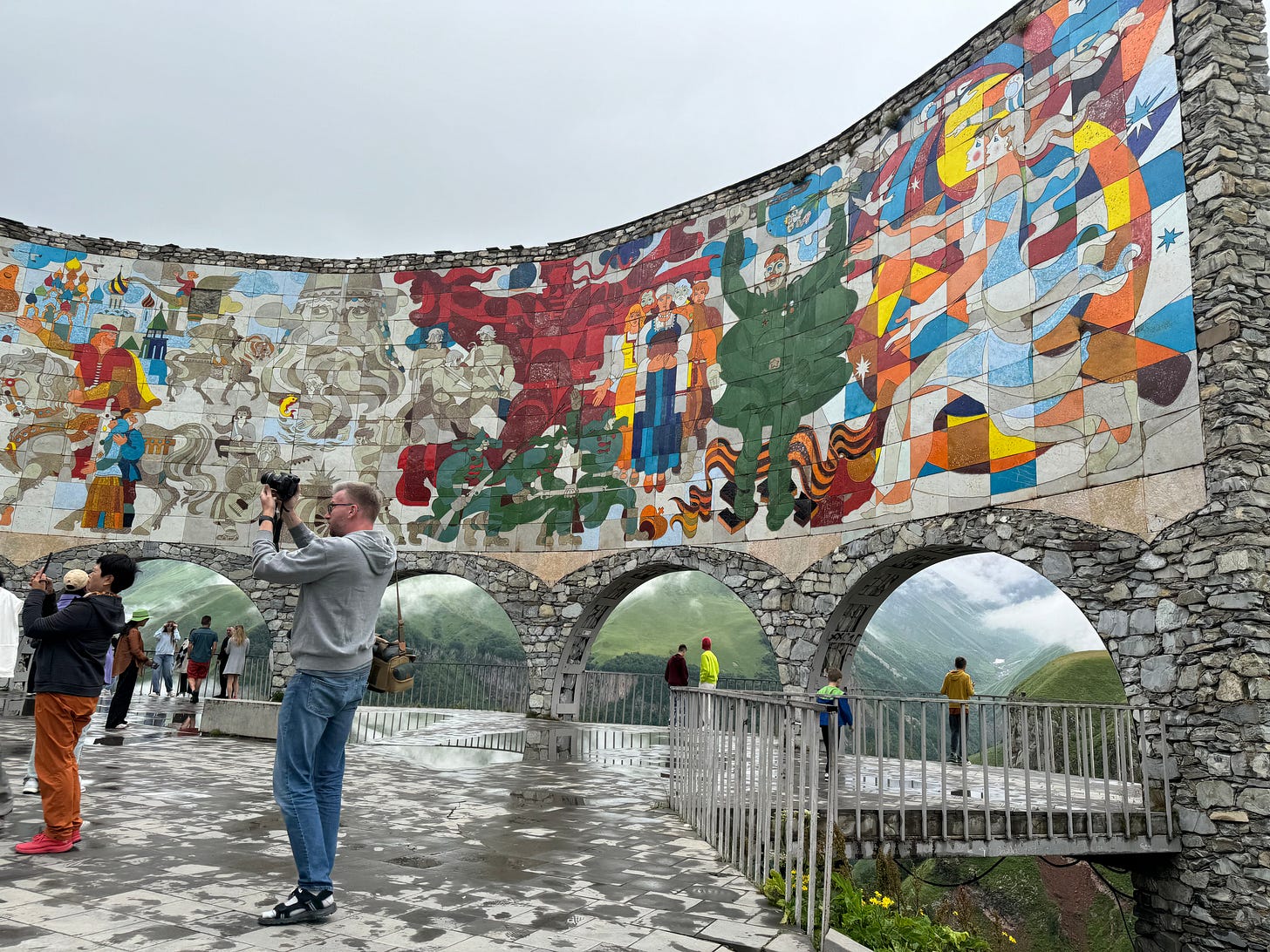From what I’ve seen in my travels to parts of the former Soviet Union and other former Communist regimes, monuments tend to be oversized, if not monstrous. They also tend to exaggerate or lie about, well, the good things.
Maybe it’s an authoritarian thing or part of “The Dictator's Handbook” or “Dictatorship: It's Easier Than You Think.” (Both do exist.)
A perfect example of Soviet bombast: the Russia-Georgia Friendship Monument. It was built in 1983 to celebrate the bicentennial of the Treaty of Georgievsk and the alleged “ongoing friendship between Georgia and Russia.” (I’ll post about how farcical and ironic that is tomorrow.)
I stopped there on my way from Georgia’s capital city of Tbilisi and the mountain town of Stepantsminda, where I’m currently spending a week. The town is about seven miles from the Russian border.
A single road goes from Tbilisi to Stepantsminda: the Georgia Military Highway. The two towns are just 90 miles apart, but the drive takes more than three hours, since much of it is on winding roads in the Caucasus Mountains.
Just as the road reaches the 7,857-foot peak of the Jvari Pass, the massive monument comes into sight miles away on a promontory that plunges nearly 2,000 feet to the valley floor. The huge circular stone and concrete structure grew ever larger as we approached it.
My driver/guide Mirian and I pulled into the parking lot for the monument, navigating a slalom course of dogs, sheep, goats, horses, vendors and frazzled travelers. We eventually found a parking space and started the short uphill walk to the monument.
The circular structure consists of huge mosaic panels set between seven equally huge concrete columns. The columns symbolize the seven centuries of friendship the Soviets claimed existed between the Georgian and Russian people.
On one side, mosaics depict figures from Georgian history and mythology. The other side depicts figures from Russian history. Lots of Georgian and Russian heroes and community symbols. In the middle, the main image of the mosaic reveals a mother and child embracing, flanked by Georgian Orthodox and Russian Orthodox churches.
To me and to many Georgians, the monument is a farce, and the friendship theme is an affront. For most of the two countries’ existences over the centuries, in various forms, Russia has forced Georgia into a subservient role. Indeed, the Military Highway was originally built by Russia to make it easier to move troops and weapons into Georgia.
As recently as 2008, Russia sent troops into Georgia, and Russia still controls two regions. When war started in Ukraine, though, the main Russian invasion along the Military Highway into Georgia became young men fleeing the draft.
To me, the primary redeeming quality (and it’s a huge one) of the monument is the 360-degree views deep into Devil's Valley, as the Jvari Pass winds its way through the mountains. If they tore down the monument and simply left a viewing platform, it would still be worth the trip–actually, maybe even more worth the trip. Well, the Russian tourists might disagree with me there–and, based on the license plates, there were lots of them.
As we left the parking lot and started our descent to Stepantsminda, Mirian and I looked at each other with what might be best described as WTF expressions.








